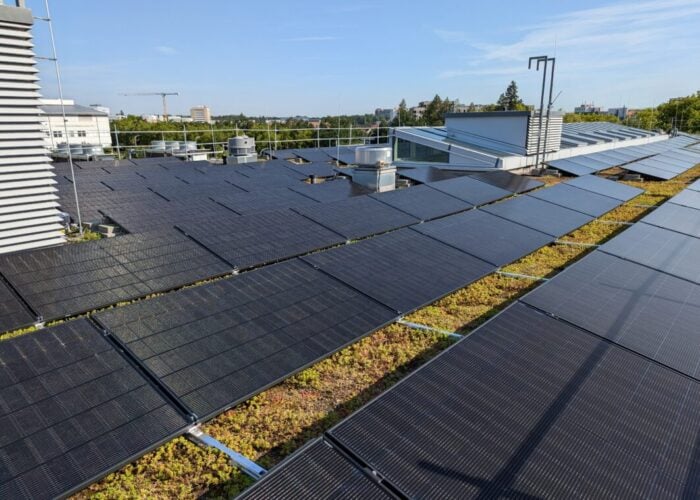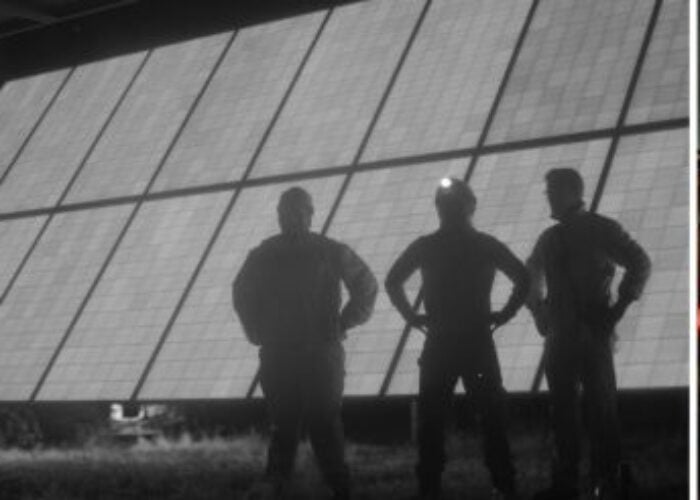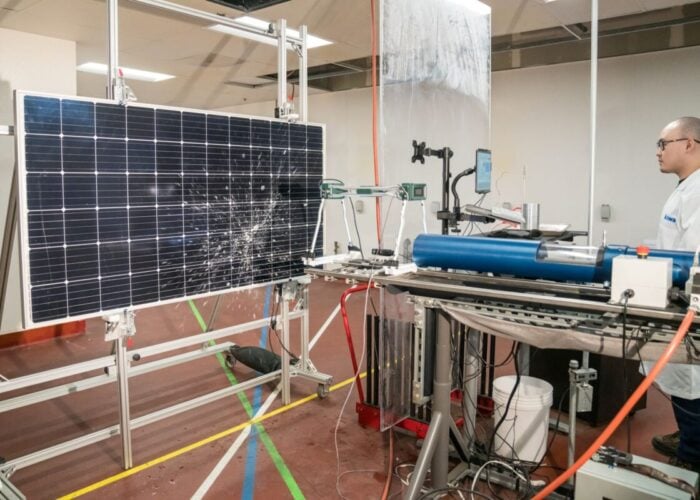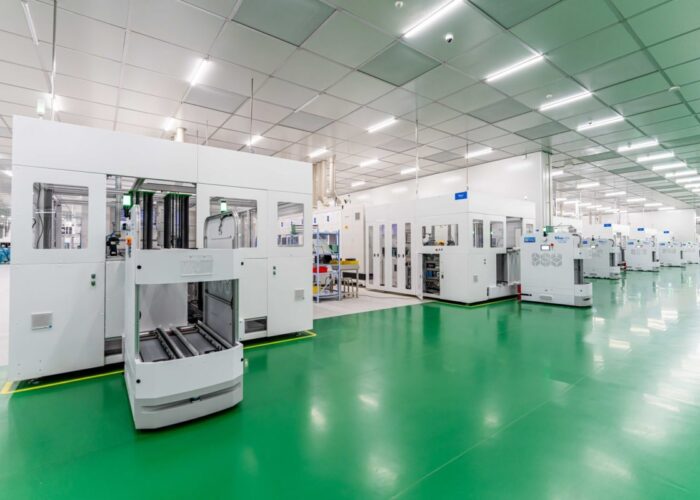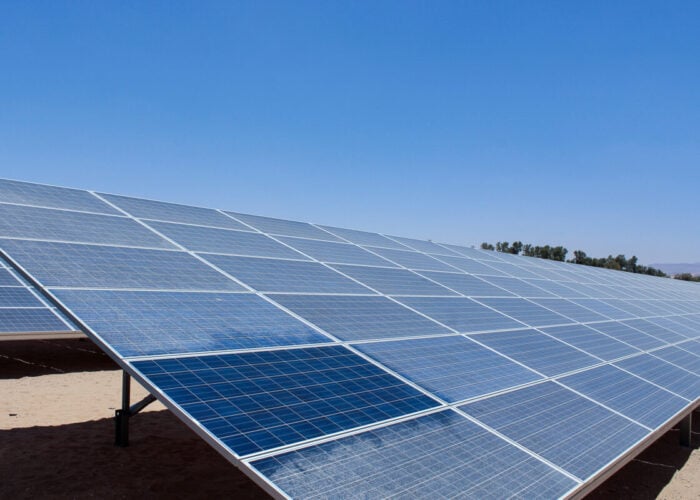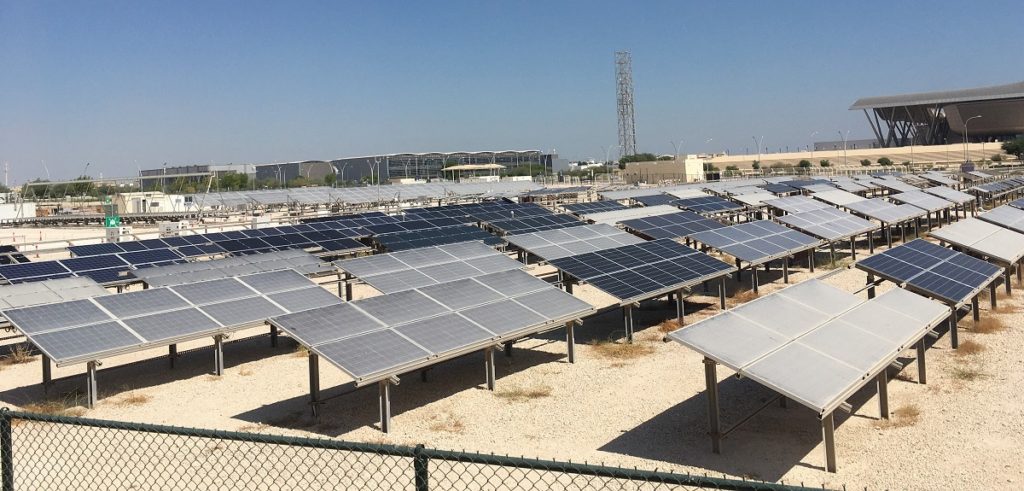
As solar continues to proliferate and spread into new markets, the technology is finding itself operating in tougher climates than ever before.
Deserts, while promising high irradiation, pose numerous considerable challenges, ranging from greater condensation, soiling risk and abrasion. The Qatar Environment and Energy Research Institute (QEERI), part of the Hamad bin Khalifa University under Qatar Foundation, launched the Solar Consortium in 2018 to bring together academia and industry to tackle some of those key areas of concern. Now, three years on, the institute is developing the findings from its indoor and outdoor testing facilities.
Unlock unlimited access for 12 whole months of distinctive global analysis
Photovoltaics International is now included.
- Regular insight and analysis of the industry’s biggest developments
- In-depth interviews with the industry’s leading figures
- Unlimited digital access to the PV Tech Power journal catalogue
- Unlimited digital access to the Photovoltaics International journal catalogue
- Access to more than 1,000 technical papers
- Discounts on Solar Media’s portfolio of events, in-person and virtual
PV Tech spoke to QEERI’s Veronica Bermudez Benito and Benjamin Figgis about the institute’s Solar Consortium, the research it is undertaking regarding solar and desert operation conditions, and why temperature coefficients alone do not appear to dictate solar performance in extreme heat.
PV Tech: Could you give us a bit of background into what QEERI’s Solar Consortium is, the types of entities that are involved and what these members have access to?
Veronica Bermudez: The Solar Consortium intends to promote global research, development and commercialisation of solar technologies. And for that, our idea is to develop solar energy technologies and operational methodologies. What we offer to our members, that can include the researchers, manufacturers, local developers and local authorities looking into solar energy, we offer them to take advantage of QEERI’s world class indoor laboratories and of course our field testing capabilities. We also have our world class outdoor laboratory that we call the outdoor test facility. In parallel to that we offer them the possibility to participate globally in projects that are interesting for the consortium as a whole, or for different members, and to have access to those data.
Benjamin Figgis: Sometimes I describe it as being the best of both worlds, in terms of working with academia, and working with a commercial testing institute. If you’re an equipment manufacturer, and you want to do outdoor testing in a hot environment, which let’s face it is absolutely essential, if you go to a commercial testing institute, they’ll give you your data at a very professional level, and it’s 100% confidential, and it’s your data. So the consortium offers that, but then we also offer the advantages of being a highly advanced scientific research institute, with strong research, curiosity and capabilities, so the consortium does these group research projects, where we have different members with different areas of expertise and different remits. And when we all put our brains and efforts together, then we can tackle some research questions together that are of interest to everyone.
PV Tech: What are some of the key research topics currently on the consortium’s agenda?
Benjamin Figgis: The first group project that everyone voted in favour of, was looking at abrasion by dry brush cleaning machines. As you know, in the desert, these brushing machines and robots are starting to be deployed everywhere and one of the key questions, or one of the unknowns, is how much abrasion these are causing to the ARC, to the anti-reflective coating.
This was a really good subject for everyone to tackle together because, in the consortium, we’ve got DSM, which is a coating company, we’ve got several PV manufacturers who are providing modules and, as QEERI, we’ve got very sophisticated core research labs with all sorts of great characterisation tools and PV labs, so we can really look at and characterise the samples in detail.
We put all of these strengths of the members together to set up an operational testing platform which recreates real world conditions. It’s got a real world cleaning machine, real world PV modules, real world dust, real world condensation. That project has been running for the better part of a year now.
Veronica Bermudez: Globally, there is huge interest in deploying solar across this region and similar regions to here. So our plan is to build a trusted laboratory and research facility with associated programs where the industry can come to test their products under real operating conditions, and not only for solar. We have started with solar, initially with PV modules and we are expanding now to trackers, which are very important components for solar power plants in the region.
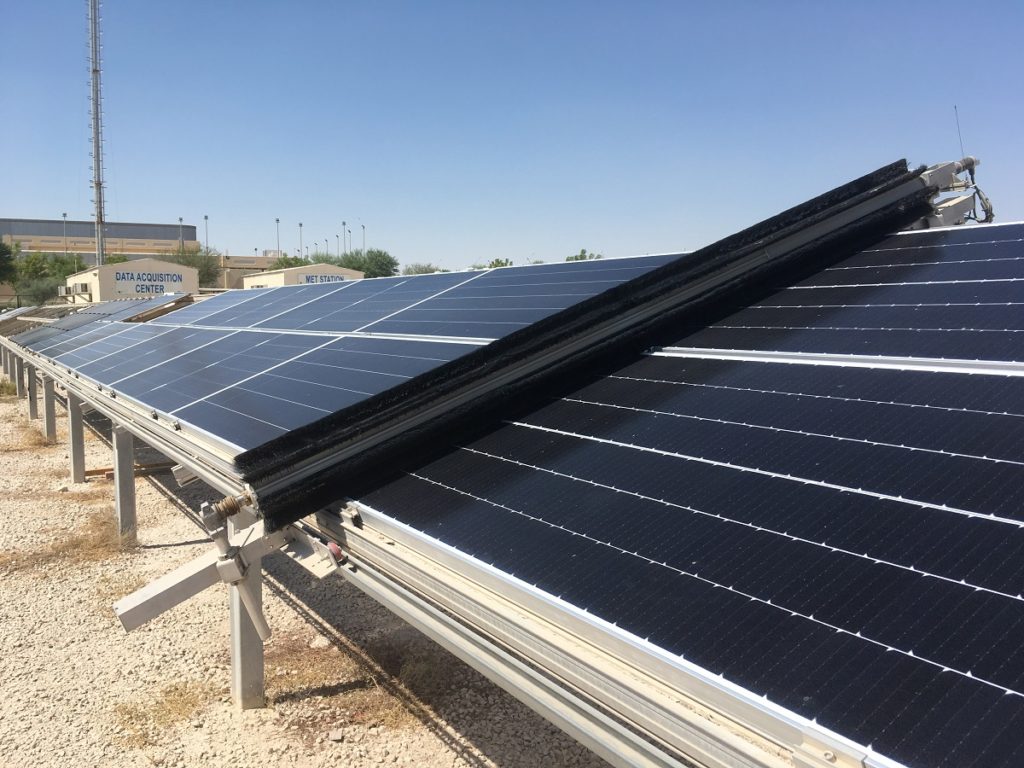
PV Tech: When it comes to deploying solar in desert conditions like you have in Qatar, and there are areas with similar conditions that are popular with solar developers, what’s the key research that you’re undertaking here and what are the main considerations?
Veronica Bermudez: There are many, many weather and operating conditions that happen here in Qatar, that don’t happen together outside Qatar. Here in our outdoor facility, we have high radiation, high humidity, high UV, high soiling rates, we have a good number of aerosol particulates in the atmosphere, salinity… We have all the worst conditions together, combined in the same place. This creates an opportunity for manufacturers and developers to test their solutions in a really harsh environment, where they can find a continuously threatening climatic environment in one location.
The research areas here are around optimising the cleaning schedule, understanding soiling patterns, forecasting soiling and, of course, forecasting the effect of soiling on PV production. We will soon be starting work on comparing different cleaning methodologies, understanding which are the best fit for the region, but also understanding why they are best suited.
PV Tech: What do you feel are the main areas of learning from your research, and of what does the industry need to be most aware?
Benjamin Figgis: One, of course, predictably, is the impact of dust. When there’s a dust storm here, obviously, you can have these massive decreases in PV performance. But one thing I have found really interesting, which is maybe a bit surprising on the soiling, is how it can actually be quite severe in very mild conditions. When there is actually almost no wind at all, it actually seems worse than the dust that you see in windy conditions, because the wind can actually be your friend, not your enemy when it comes to soiling.
Another one is the impact of dew or condensation that we’re seeing as a really important factor driving a lot of soiling behaviour, but which really hasn’t yet been explored in detail.
When we started looking at the PV side, one thing that we found surprised us initially was that there was a baseline expectation, which I’m not saying is wrong, that related to technologies with lower temperature coefficients – going back 10 years, we were talking about CdTe and some of the other thin film technologies compared to crystalline – so, everyone expected that we would see the lower the temperature coefficient, the greater the yield. And actually, we’ve tested close to 60 different PV module technologies, and when you just do a very simple plot of temperature coefficient on your X axis and specific yield on your Y axis, there’s not as strong a correlation as you might have expected, which is telling us there are a lot of other things that are more important to how a PV module performs in desert conditions than just the temperature coefficient alone.


